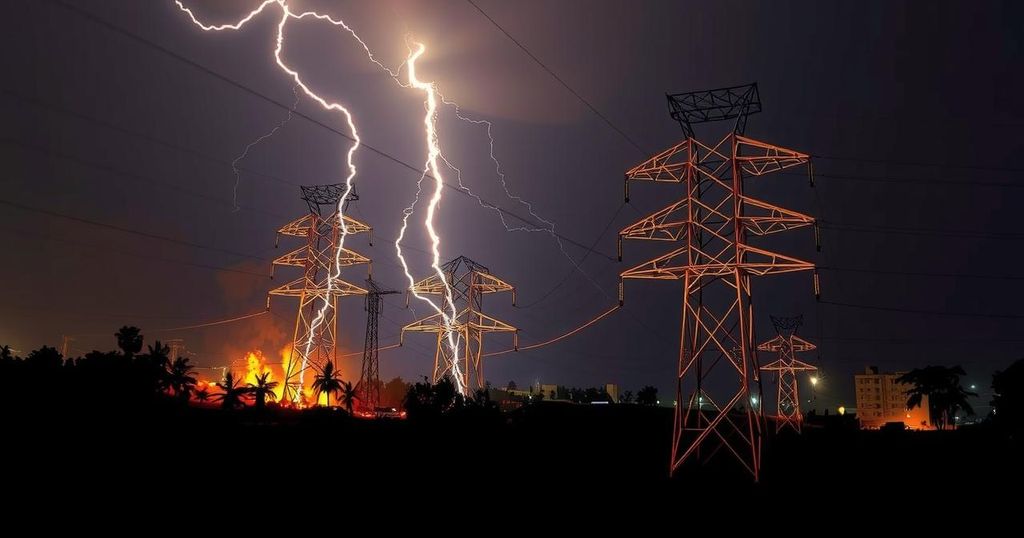Simultaneous Blackouts Hit Zimbabwe and Zambia Amid Energy Crisis

Zimbabwe and Zambia experienced nationwide blackouts on Sunday night, likely caused by a surge on power lines from South Africa. While ZESA confirmed restoration efforts were underway, both countries continue to face significant power generation challenges due to reliance on aging infrastructure and reduced capacities.
On Sunday night, both Zimbabwe and Zambia faced significant nationwide blackouts, which were likely caused by a surge in power lines linked to Eskom, the South African power utility. The power loss occurred almost simultaneously, with Zambia losing electricity at 8:15 PM, followed by Zimbabwe at 8:25 PM. The Zimbabwe Electricity Supply Authority (ZESA) confirmed the occurrence, stating, “The national grid experienced a system disturbance resulting in a nationwide blackout.” ZESCO, Zambia’s state power company, echoed this sentiment, attributing the outage to a “power system disturbance… leading to loss of power supply that has affected the whole country.”
Efforts to restore power commenced promptly, with ZESA reporting considerable progress by early Monday morning. ZESA announced, “The restoration process began immediately, and we are happy to advise that as of this morning, most of the load centers (regional substations) have been picked countrywide.” Power was largely restored in Zimbabwe by 3 AM, much to the relief of residents who had experienced prolonged darkness.
Sources within ZESA indicated that the blackouts likely resulted from a power surge along transmission lines from South Africa, which both nations rely on for electricity imports. With Zambia facing a more acute power crisis, it has increased its imports to alleviate its substantial power deficit. Eyewitness accounts reported that the power supply fluctuated before the complete outage, signaling instability in the system.
These blackouts highlight the ongoing energy challenges in both Zimbabwe and Zambia, which are heavily reliant on the Kariba hydroelectric plant. This facility has been hindered by low water levels, and in Zimbabwe, deteriorating thermal power stations have exacerbated the situation, causing power cuts of up to 18 hours daily. Similarly, Zambia has experienced frequent outages affecting daily life and economic activity. This incident illustrates the precarious nature of the power infrastructure in the region, necessitating measures to enhance grid stability and diversify energy sources as both nations confront persistent energy crises.
The recent simultaneous blackouts in Zimbabwe and Zambia illustrate the region’s vulnerability to power supply disruptions, primarily due to infrastructure weaknesses and reliance on shared resources. Both countries import electricity from Eskom, highlighting the interconnectedness of their grids. The ongoing challenges are exacerbated by reduced generation capacity at the Kariba hydroelectric plant and aging thermal power stations, which struggle to meet demand and have become prone to failures.
In conclusion, the simultaneous blackouts in Zimbabwe and Zambia serve as a stark reminder of the fragility of their power infrastructure. The reliance on shared electricity imports and the recurring power generation issues from local sources present significant challenges to both nations. As they navigate ongoing energy crises, prioritizing the reinforcement of grid resilience and diversification of power generation will be crucial for achieving energy security and stability.
Original Source: bulawayo24.com






